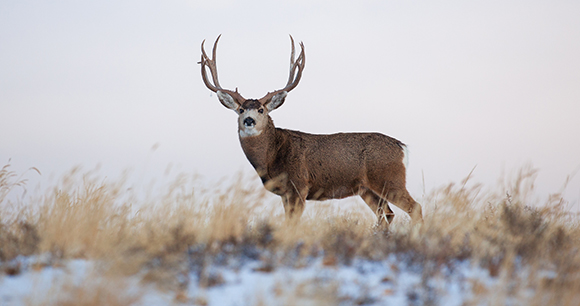by Paige Singer, Rocky Mountain Wild
East Vail Pass on Interstate 70, between Copper Mountain Resort and the top of Vail Pass, is an important movement corridor for wildlife in Colorado. Most recently, the Summit County Safe Passages Connectivity Plan for Wildlife, initiated by the US Forest Service, identified East Vail Pass as a top priority area in which to focus human-wildlife conflict mitigation efforts in the near term. The plan, completed in 2017, was developed by a diverse group of stakeholders and provides a common vision for multispecies landscape connectivity throughout Summit County, Colorado.

Encompassed entirely by the White River National Forest, East Vail Pass is important habitat for several wildlife species. Yet wildlife movement in the area is at risk due to the heavy and increasing traffic volumes on I-70—this stretch sees 23,000 vehicles on an average day. This amount of traffic presents a significant barrier to wildlife, with many animals not attempting to cross the roadway, or dying in the attempt. To restore connectivity, three wildlife-crossing structures—one overpass and two underpasses—have been recommended to allow for the safe passage of wildlife over or under I-70.
Monitoring, both before and after construction, is essential to assess whether mitigation measures for wildlife connectivity are successful. Since 2015, Rocky Mountain Wild and partners have engaged the local community in wildlife monitoring at the proposed overpass location. In spring 2021, following a brief hiatus due to the COVID-19 pandemic, we expanded the monitoring program to include all three proposed structure locations thanks to generous funding from an AWI Christine Stevens Wildlife Award.
This four-year study uses a comprehensive monitoring scheme of remote-triggered cameras to collect data on relative abundance of target wildlife species in the vicinity of I-70 on East Vail Pass. Since implementing the expanded monitoring program, we have placed the project’s 30 cameras at 240 locations throughout the roughly 700-acre study area, moving each camera to a new location once every five weeks during the summer field season.
We collected over 160,000 images in our first two years, documenting the presence of several species, including American marten, black bear, bobcat, coyote, elk, moose, mule deer, porcupine, snowshoe hare, red fox, and raccoon. Perhaps most exciting is that our team has documented bighorn sheep on East Vail Pass for the first time since monitoring began in 2015.
The collected data has already informed structure designs to ensure they are built to meet the movement needs of all wildlife in the area. Furthermore, the data will permit us to assess the effectiveness of the structures by comparing it with wildlife monitoring data collected once the structures have been built.
Additional information about this project is available online.